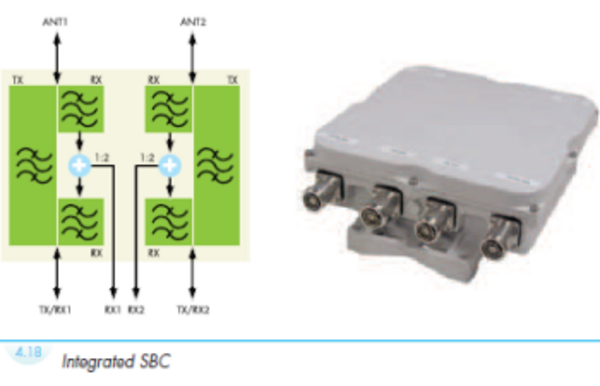Editor’s Note:This is the second installment for our “Meet the RF Experts” series in which contributors to the Understanding the RF Path e-book elaborate on subjects in their areas of expertise.
Recently, an inquiry landed on my desk, asking for “something that will combine two 850 MHz signals.” Simple as it sounds, I can easily think of half a dozen solutions that meet that description in one way or another. I had to find out more about specific frequencies and power levels, etc. before I could make a recommendation. This need prompted a call to the requestor, yielding not only the required information but also the usual pleasant conversation with a fellow RF professional. That’s what I enjoy about application engineering, which is what I do here at CommScope.
What the customer needed is what we call a Same-Band Combiner (SBC). As a product category, SBCs
Turns out, not quite so…
If you’re into classic cinema, you may recognize the title of this post. The duet with Fred Astaire and Ginger Rogers from the 1937 film Shall We Dance played on the theme of differences in pronunciation. In our less glamorous world of RF engineering, we find such differences across the industry and across the globe, and it doesn’t end with pronunciation! What one user calls a Low Loss Combiner is known to another as an In-Band Diplexer while Quadriplexermay be the preferred term in the overseas community.
This diversity in terminology became conspicuous as I grappled with Chapter 4 of the Understanding the RF Path e-book. In this chapter I compare options for co-siting, or sharing the RF path between two or more services. Multi-Band Combiners and Tower Mounted Amplifiers are among the solutions presented, and SBCs are covered as well, of course. In this endeavor I was in want of unambiguous terminology, but who am I to decide which is the correct name for a particular device? In so doing would I be suggesting that those who disagree are wrong?
That certainly was not my intent, and I know everyone’s familiar terms will not be changed overnight. But I think greater uniformity in terminology will make creating, discussing and analyzing RF solutions easier for all parties involved. I propose that we categorize these cell site products according to their application, that is, their function in the RF path. SBCs, for example, will be categorized as Duplex/Duplex, Duplex/RX, etc. Construction and performance can differ between products within a category, but it will be easier to find and compare solutions to a particular co-siting problem. As we welcome new talent to our guild, we can give them a better structured introduction to the available methods, products and solutions. Meanwhile, existing products can retain the names by which they are already known. But who knows—in time we may all speak the same language.
Let's Call the Whole Thing Offwas the name of the song by George and Ira Gershwin. I say let’s not do that! Let’s continue the discussion about best practices in RF path design. We hope you enjoy the e-book and come back to our site often to see what else we are doing to share knowledge and experience, and communicate with our industry peers.
What ambiguous terms and confusing descriptions have you encountered? What can we do to better explain the functionality and application of different co-siting solutions?







